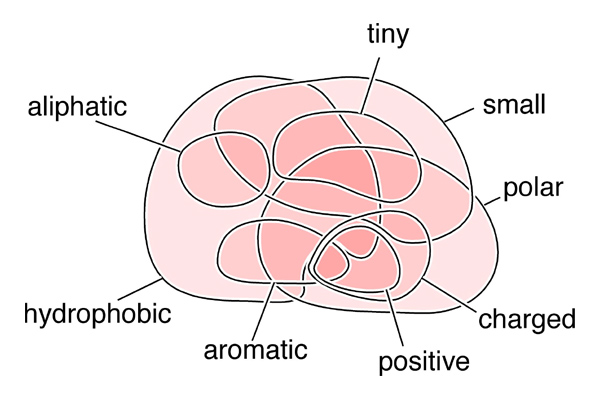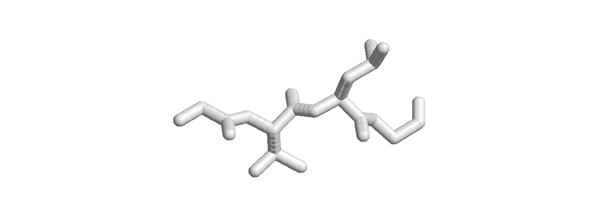Amino Acid Exam Questions
Jump to navigation
Jump to search
- Of all abstractions in bioinformatics, the one-letter amino acid code is the most important one. The evaluation of multiple sequence alignments, database searches or mutational studies, all require a confident understanding of the physicochemical results of sequence changes and knowing which letters represent which amino acids.
2002
- Write the sequence of this polypeptide into your exam booklet in one-letter code. Where the sidechains are ambiguous, write all possible one letter codes for the residue in square brackets. Annotate residues that are > 80 % charged at physiological pH with a "+" or "-".
- Example:
AB+CD[EFG]HIJ[KL]M-N-OPQ
2003
- List the three letter and one letter code for the two sulfur containing amino acids.
- List the three letter and one letter code for the two amino acids that you would expect more frequently near the N-terminus of an alpha helix than its C-terminus.
- Which one of the above is larger ?
- List the three letter and one letter code for all the amino acids with aromatic side chains.
- List the three letter code for the amino acids K and M. What do these two have in common?
- List the one letter codes for glutamine, glutamic acid and aspartic acid.
- List the one letter code for the residue that cannot donate a hydrogen bond from its backbone.
- List the three letter code and one letter code for the three β-branched amino acids.
- You find the following residues in a position of a multiple alignment: V, I, L. What secondary structure could this position be a part of ? (Write "none" if these are not typical for any secondary structure.)
- In the amino acid substitution H→T, which is the most important property that is conserved? (Write "none" if this is a non-conservative substitution.)
2004
- List the three letter and one letter code for the two negatively charged amino acids.
- List the three letter and one letter code for the three amino acids that you would expect to form salt bridges with a DNA phosphate backbone.
- Which one of the above is the largest ?
- List the three letter and one letter code for all the amino acids that have side chains which cannot participate in hydrogen bonds.
(Ignore Glycine.)
- List the three letter code for the amino acids K, E, D. What do these three have in common?
- List the one letter codes for tryptophan, arginine and leucine.
- List the three letter and one letter code for the residue that cannot donate a hydrogen bond from its backbone.
- List the three letter code and one letter code for the three β-branched amino acids.
- In the amino acid substitution T→S, which is the most important property that is conserved? (Write "none" if this is a non-conservative substitution.)
- In the amino acid substitution E→D, which is the most important property that is conserved? (Write "none" if this is a non-conservative substitution.)
2004
- List the three letter and one-letter code for the smaller of the two amino acids that have a side-chain carboxylate group.
- List the three-letter and one-letter code for the three amino acids that you would expect to form salt bridges with the phosphate group of a DNA strand.
- In the amino acid substitution F→N, which is the most important property that is conserved? (Write "none" if this is a non-conservative substitution.)
- List the three-letter and one-letter code for all the amino acids with aromatic side chains and note those that cannot accept a hydrogen bond with their sidechain. (Write "all" if all these sidechains can function as hydrogen bond acceptors.)
- List the three-letter and one-letter code for the one residue that cannot participate in the regular i→i+4 hydrogen bonding pattern of an α-helix backbone and note why it can't.
- List the three-letter code and one-letter code for the β-branched amino acids and explain with a simple sketch what "β-branched" means.
2005
- Please complete the Venn diagram by entering the one-letter code for the standard proteinogenic amino acids.
Note that some of the properties in this diagram are quantitative, not qualitative, thus there may be some perceived ambiguity in assigning amino acids to these categories and more than one solution may be considered correct.
2005
- What could the sequence(s) of the central dipeptide be?


